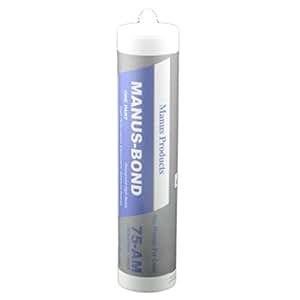Estafiate, also known as Mexican sage or *Salvia leucantha*, is a perennial plant celebrated for its striking purple flowers and aromatic leaves. Originating from Mexico, it thrives in warm climates but can be cultivated in various environments with the right care. This article will provide a comprehensive guide on how to successfully grow estafiate in your garden, covering everything from soil conditions to pest management.
Understanding Estafiate
Estafiate belongs to the mint family and is known for its resilience and low maintenance requirements. The plant typically grows to a height of 2 to 4 feet and blooms from late summer to fall, attracting pollinators like bees and hummingbirds. Its aromatic leaves are often used in traditional medicine and cooking, making it a valuable addition to both ornamental and culinary gardens.
Choosing the Right Location

Before planting estafiate, it is essential to choose the right location to ensure its optimal growth. Here are some factors to consider:
- Sunlight: Estafiate thrives in full sun, requiring at least 6 to 8 hours of direct sunlight daily. Choose a location that is not shaded by trees or buildings.
- Soil Type: Well-draining soil is crucial for estafiate. Sandy or loamy soils with good drainage are ideal, as the plant does not tolerate waterlogged conditions.
- Climate: Estafiate prefers warm climates. It can withstand drought conditions but will flourish with moderate watering. If you live in a cooler climate, consider planting estafiate in pots that can be moved indoors during frost.
Preparing the Soil

Soil preparation is a critical step in cultivating estafiate. Follow these steps for optimal soil conditions:
- Testing Soil pH: Estafiate prefers a slightly acidic to neutral pH (6.0 to 7.0). You can use a soil testing kit to determine your soil’s pH level.
- Amending Soil: If your soil is too dense or clay-like, mix in organic matter such as compost or well-rotted manure to improve drainage and fertility.
- Creating Raised Beds: If your soil is prone to water retention, consider building raised beds to enhance drainage.
Planting Estafiate

Once your soil is prepared, it is time to plant estafiate. Here are some tips:
- Seed vs. Transplant: You can either start estafiate from seeds indoors or purchase young plants from a nursery. If starting from seeds, sow them indoors 6-8 weeks before the last frost date.
- Spacing: When planting, space each estafiate plant 18 to 24 inches apart to allow for growth and airflow.
- Planting Depth: If transplanting, dig a hole twice as wide as the root ball and deep enough to accommodate the roots. Place the plant at the same depth it was growing in the pot.
Watering and Fertilizing
Proper watering and fertilization are essential for the healthy growth of estafiate:
- Watering: Water the plants deeply but infrequently. Allow the soil to dry out between watering sessions to avoid root rot.
- Fertilization: Estafiate does not require heavy fertilization. A balanced, slow-release fertilizer applied in the spring will suffice. Too much nitrogen can lead to excessive foliage growth at the expense of flowers.
Pruning and Maintenance

Regular maintenance will help keep your estafiate plants healthy and encourage blooming:
- Pruning: Prune estafiate in early spring to remove dead or damaged stems. This encourages new growth and promotes a bushier appearance.
- Deadheading: Removing spent flowers can prolong the blooming period. Regular deadheading will encourage the plant to produce more flowers.
- Mulching: Apply a layer of mulch around the base of the plants to retain moisture, suppress weeds, and regulate soil temperature.
Pest and Disease Management
Estafiate is relatively pest-resistant, but it’s important to be vigilant:
- Common Pests: Watch out for aphids, spider mites, and whiteflies. These can be managed with insecticidal soap or neem oil.
- Diseases: Fungal diseases can occur in overly moist conditions. Ensure proper spacing and air circulation to prevent issues like powdery mildew.
- Companion Planting: Consider planting estafiate alongside other plants that attract beneficial insects or repel pests, such as marigolds or nasturtiums.
Harvesting and Uses

Estafiate leaves can be harvested for culinary or medicinal uses. Here’s how to do it properly:
- Timing: Harvest leaves when the plant is healthy and before it flowers for the best flavor.
- Method: Use clean scissors to snip off leaves as needed. Avoid removing more than one-third of the plant at a time to ensure continued growth.
- Uses: The leaves can be used to make herbal teas, added to dishes for flavor, or even used in medicinal preparations.
Case Studies: Successful Estafiate Cultivation

To illustrate successful estafiate cultivation, let’s look at two case studies:
Case Study 1: Community Garden in California
A community garden in Southern California incorporated estafiate into their landscape to attract pollinators. The garden experienced a 30% increase in pollinator visits after planting estafiate, which also contributed to higher yields of nearby vegetable plants due to improved pollination.
Case Study 2: Urban Rooftop Garden
An urban rooftop garden in New York City successfully cultivated estafiate in containers. The plants thrived in the sunny environment, providing aesthetic appeal and a source of fresh herbs for the residents. The garden reported that estafiate attracted a variety of beneficial insects, enhancing the overall health of the rooftop ecosystem.
In summary, cultivating estafiate in your garden can be a rewarding endeavor. By selecting the right location, preparing the soil appropriately, and providing consistent care, you can enjoy the beauty and benefits of this vibrant plant. Whether you use it for culinary purposes or as a decorative feature, estafiate can enhance your garden while attracting pollinators and promoting biodiversity. With minimal maintenance and a few preventative measures against pests, estafiate can thrive in various environments, making it a valuable addition to any garden. Start your estafiate journey today, and watch your garden flourish!


